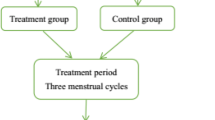Abstract
Objective
To observe the acupuncture therapy effect on the urinary retention after radical: hysterectomy.
Methods Methods
Eighty cases of urinary retention after radical hysterectomy were randomly assigned to: the treatment group and control group according to the random number table method, 40 cases in each group. From the 15th day post operation, the patients in the two groups started to be treated and 7 days as a course with 5 days treatment and 2 days interval. The treatment group applied acupuncture with modalities of common needling on Zusanli (ST36) bilaterally, electroacupuncture on Sanyinjiao (SP6), Shuidao (ST28), and Scalp Reproduction Area bilaterally, moxibustion on Shenque (CV8). The control group applied acupoint injection with vitamin B B12 12, and Sanyinjiao and Zusanli were selected. Take turns on both sides. The courses for the recovery, of bladder function and residual urine volume for those who had voluntary micturition more than 200 mL after the first and second course of treatment were compared between the two groups.
Results
Within 1 course and 2: courses of treatment, the patients with bladder function recovery in the treatment group were 21 (21/40) and 36 (36/40), and those in the control group were 12 (12/40) and 29 (29/40), both with a significant difference (P<0.05). After the first course and second course, residual urine volume for those who had voluntary micturition more than 200 mL in the treatment group was 91.7±17.5 mL and 93.5±15.5 mL, in the control group 102.4±13.7 mL and 102.5±15.7 mL, both with a significant difference (P<0.05).
Conclusions
Combination of acupuncture: modalities was better than acupoint injection for the recovery of bladder function in urinary retention after radical hysterectomy. It would shorten the course of treatment and get a better recovery, decrease urinary retention cases of refractoriness, and extending the treatment could raise the healing rate of urinary retention.
Similar content being viewed by others
References
Axelsen SM, Petersen LK. Urogynaecological dysfunction after radical hysterectomy. Eur J Surg Oncol 2006;32:445–449.
Liu ZH, Zhao YH, Zhang Y, Shang J, Liao QP, Cao ZY. Analysis of postoperative urinary complications occurred in patients with cervical carcinomas. Chin J Clin Obstetrics Gynecol (Chin) 2005;6:13–15.
Papacharalabous E, Tailor A, Madhuri T, Giannopoulos T, Butler-Manuel S. Early experience of laparoscopically assisted radical vaginal hysterectomy (Coelio-Schauta) versus abdominal radical hysterectomy for early stage cervical cancer. Gynecol Surg 2009;6:113–117.
Kavallaris A, Hornemann A, Chalvatzas N, Luedders D, Diedrich K, Bohlmann MK. Laparoscopic nerve-sparing radical hysterectomy: description of the technique and patients’ outcome. Gynecol Oncol 2010;119:198–201.
Zang RY. Modalities of pelvic autonomic nerve-sparing surgery in pelvis-gynecology. China Oncol (Chin) 2006;11:907–910.
Zakashansky K, Bradley WH, Chuang L, Rahaman J, Dottino P. Recent advances in the surgical management of cervical cancer. Mount Sinai J Med 2009;76:567–576.
Nitta M, Tamaki T, Tono K, Okada Y, Masuda M, Akatsuka A, et al. Reconstitution of experimental neurogenic bladder dysfunction using skeletal muscle-derived multipotent stem cells. Transplantation 2010;89:1043–1049.
Zhang ZY, ed. Clinical surgery of gynecological carcinomas. Shanghai: Shanghai Science and Technology Publishing House; 1995:136–137.
Yi WM, Li JJ, Lu XM, Jin LL, Zou YQ. Effects of electroacupuncture on urinary bladder function after radical hysterectomy. Chin Acupunct Moxib (Chin) 2008;28:653–655.
LU AG, Jiang J. Clinical observation on treating urinary retention after parturition by acupoint injection on SP6. Chin Countryside Med (Chin) 2008;15:39
Author information
Authors and Affiliations
Corresponding author
Rights and permissions
About this article
Cite this article
Yi, Wm., Pan, Az., Li, Jj. et al. Clinical observation on the acupuncture treatment in patients with urinary retention after radical hysterectomy. Chin. J. Integr. Med. 17, 860–863 (2011). https://doi.org/10.1007/s11655-011-0800-5
Received:
Published:
Issue Date:
DOI: https://doi.org/10.1007/s11655-011-0800-5



